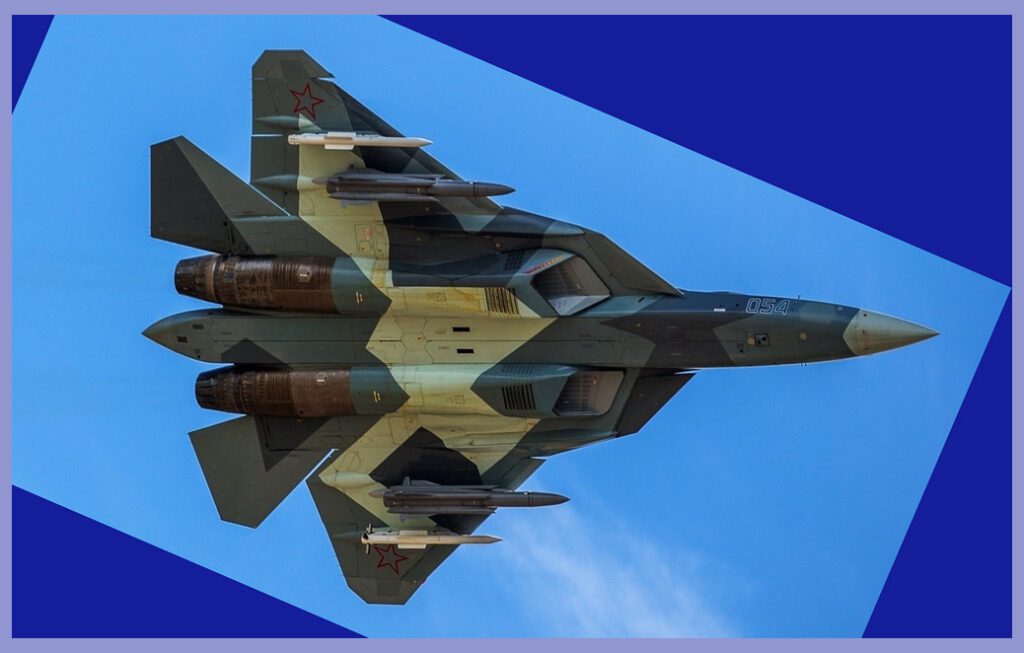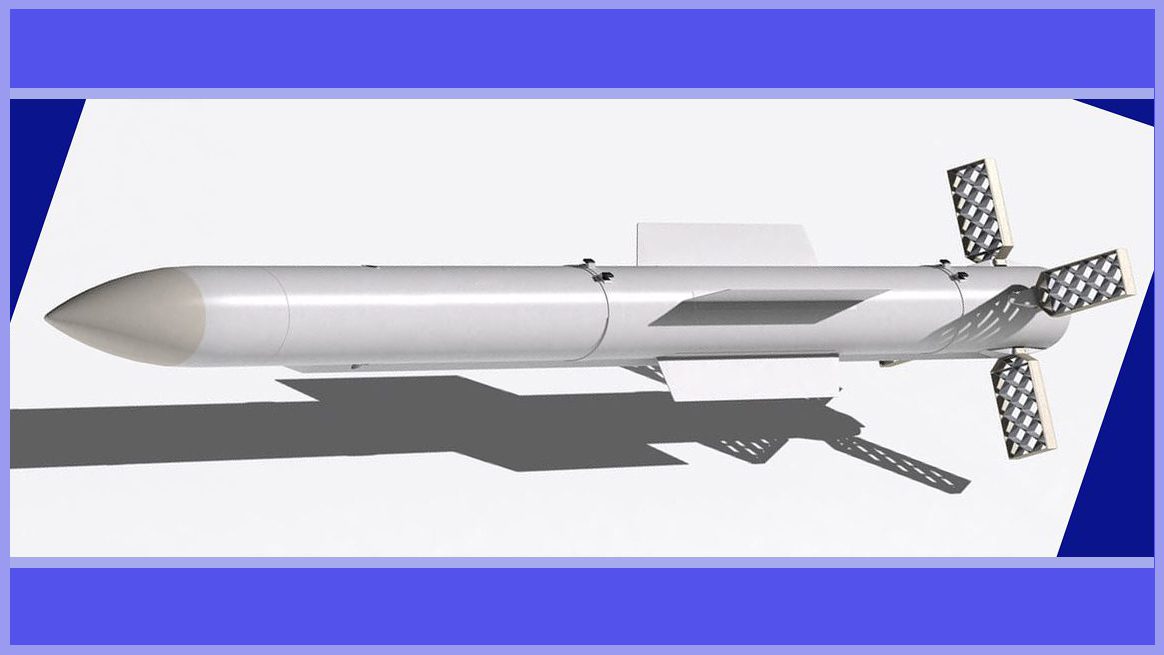Amidst the ever-evolving landscape of aerial warfare technology emerges the Vympel R-77, a remarkable Russian Air-To-Air Missile with active radar homing, extending its lethal reach beyond the confines of optical range. Discover the best of the Vympel R-77 Adder Missile. Specifically created as a counterpart to the American AMRAAM, this missile falls under the “Fire And Forget” category of the Fox3. With its ability to engage multiple threats simultaneously and adapt to evolving battlefield dynamics, the R-77 Adder epitomizes the relentless pursuit of innovation in the realm of air combat weaponry.
The Vympel R-77, also known by the export designation RVV-AE, represented a significant advancement as it was the first all-purpose missile developed by Russia specifically designed for tactical and strategic aircraft. This missile was tailored for fire-and-forget operations, enabling engagement against a wide array of aerial targets, including hovering helicopters and fast low-altitude aircraft.
Notably, the R-77 found operational deployment on Su-35S fighters conducting combat air patrols over Syria in 2016. For international markets, the export iteration of the R-77-1 is referred to as RVV-SD.

Development of the Vympel R-77 Adder Missile
In 1982, the developmental work on the R-77 missile commenced, undertaken by the Vympel Design Bureau. This highly versatile missile system was designed not only to counter Surface-to-Air Missiles (SAMs) such as the Patriot but also to engage medium- and long-range air-to-air missiles like the AIM-120 AMRAAM and AIM-54 Phoenix.
The missile’s distinctive feature lies in its expanding rod warhead, engineered to effectively neutralize targets of various dimensions. This warhead is complemented by a laser-triggered proximity fuze, enhancing its accuracy. Notably, the R-77 demonstrates adaptability, finding utility in countering both cruise missiles and precision-guided weapons (PGMs). In a significant unveiling at the Moscow Airshow (MAKS) in 1992, the R-77 caught attention, earning the moniker “Amraamski” from Western media. The operational range of both the R-77 and its export counterpart, the RVV-AE, reaches up to 80 kilometres.

The R-77 missile system has found deployment on modernized iterations of Su-27, MiG-29, MiG-35 and MiG-31 aircraft within the Russian Air Force’s operational framework. Its export counterpart, the RVV-AE, has garnered substantial global interest, witnessing notable procurement by countries such as China and India, mirroring the acquisition trend seen with the R-73 system. The foundational R-77 design was established during the 1980s, and its development phase concluded around 1994. Notably, India emerged as the inaugural international client for the export version, designated as the RVV-AE, receiving its initial batch in 2002.

Several variations are also being developed. One of these notable variations, known as the RVV-AE-PD, incorporates an improved motor designed to significantly increase the missile’s range, particularly at high elevations, extending it to as much as 120–160 kilometres. This extended range capability has been achieved through the integration of a potent solid-fuel ramjet engine, which has successfully undergone a series of test flights to validate its performance.
The RVV-AE-PD now boasts a range that can be compared to that of the American AIM-54 Phoenix, a missile renowned for its long-range capabilities. Additionally, another iteration of the R-77 includes the implementation of a terminal infrared homing seeker, further enhancing its precision and target acquisition capabilities.

This is in line with Russian tactics, which entail launching missile pairs equipped with diverse homing systems to effectively engage targets. Consequently, the defensive strategies of the target aircraft become more intricate, as they must effectively counteract the threat posed by two separate homing systems. If an adversary jet aircraft finds itself beyond the non-escape engagement zone, it might successfully evade a radar-guided medium-range missile by executing an emergency manoeuvre.
However, at this point, as the jet aircraft manoeuvres to evade, its engine nozzle becomes exposed, subsequently revealing its infrared characteristics. As a result, the utilization of infrared guidance gains a significant advantage, enhancing its ability to successfully eliminate the opponent.

This approach to assault might not always be feasible, given that infrared (IR) seekers generally exhibit shorter-range capabilities and are more susceptible to adverse weather conditions compared to radar seekers. Consequently, the effective deployment of combined seeker attacks could be constrained, unless the infrared-guided missile receives its initial targeting from radar or alternative methodologies.
The R-77M was the name of another upgrade program that used a two-stage motor and a better seeker to make the missile longer and heavier. The R-77M1 and later the R-77-PD were further iterations of the R-77 that added a ramjet propulsion system. This missile was intended for the MFI program and the MiG 1.44 aircraft. The munition can kill targets of various sizes since it features an expanding rod warhead and a laser ignite. Unfortunately, the MiG 1.44 program was never developed due to a lack of funds.

Vympel R-77 Design Characteristics
The missile uses an active radar seeker developed by OAO Agat, which includes various doppler-monopulse modes. When launching the missile at short ranges, it operates in an active “fire-and-forget” mode, following the two available radar modes. To guide the missile over longer distances, an inertial guidance autopilot is used, receiving intermittent encoded data updates from the launch aircraft’s radar.
These updates help adjust the missile’s spatial position or its target control based on changes in speed or direction. When the missile approaches a distance of 20 kilometres or less from its target, it switches to its active radar mode. If the target manages to break the missile’s lock-on, the host radar system retains calculated target information.

The missile’s aerodynamics are a result of combining small cruciform wings with grid fins that function as control surfaces at the rear. This unique combination of features enables the missile to perform sharp turns even at high angles of attack, allowing it to turn as fast as 150° per second.
However, it’s important to note that these grid fins contribute to increased drag and radar visibility. In recent updates, it’s been reported that the latest versions of the R-77, designed for the Su-57, will have conventional fins instead of grid fins to address some of these concerns.
Additional Developments of the Vympel R-77
The R-77-1 missile and its export version RVV-SD weigh 190 kg, which is 15 kg more than the earlier R-77 and RVV-AE weighing 175 kg. Additionally, there’s an extended maximum range from 80 km to 110 km. The missile’s length has also seen a slight increase from 3.6 m in the basic version to 3.71 m. Improvements have been made to the missile’s radar seeker and the rear part of the missile, called the boat tail, which helps reduce drag. It’s worth noting that there were at least two ongoing projects related to the missile—one intended for sale and the other for the Russian Air Force.

These projects were revealed when the Russian missile manufacturer Agat acknowledged its efforts to enhance the seeker technology for the R-77. Vympel is also actively engaged in developing a more extensive upgrade for the missile that surpasses even the R-77-1 variant. This advanced version integrates a dual-pulse motor configuration aimed at achieving an even greater range extension.
Notably, it will replace the lattice fins of the R-77 with a modern active electronically scanned array seeker and more conventional rear fins. All of these enhancements are being undertaken with a clear objective: to outperform the capabilities of the AIM-120 AMRAAM missile.
Apart from Air-to-Air versions, In addition, this missile is also designed as Surface-to-Air ( SAM ) versions as well, such as the RVV-ZRK Surface-to-air variant & R-77-SRK – Ship-to-air variant.

Acquisition and Delivery: India Receives Russian R-77 Adder Missiles
In the fiscal year 2014-15, the Indian Air Force and Navy successfully acquired a total of 500 missiles, marking a significant enhancement to their aerial arsenal. Following this acquisition, in 2019, an additional order for 400 missiles was placed to further bolster the armament of its squadrons equipped with MiG-21 Bison, MiG-29UPG, MiG-29K, and Su-30MKI aircraft, demonstrating the ongoing commitment to modernizing and strengthening the nation’s defence capabilities.

Key Specifications of the Vympel R-77 Adder Missile
- Weight: 175 kg ( R-77 ), 190 kg ( R-77-1 )
- Length: 3.6 m (R-77), 3.71 m (R-77-1)
- Diameter: 200 mm ( 7.87 inches )
- Warhead: 22.5 kg Rod warhead initiated by impact/fragmentation
- Detonation: Laser proximity fuse system
- Engine: Solid fuel rocket motor ( R-77 ) & air-breathing ramjet ( R-77-PD )
- Range: R-77, RVV-AE: 80 kilometres / R-77-1, RVV-SD: 110 kilometres / R-77M: 193 kilometres
- Speed: Mach 4 and Mach 5 for K-77PD ( RVV-AE-PD )
- G force: Up to 9G target manoeuvres
- Guidance: Infrared homing / Inertial with a mid-course update Active radar homing & Passive radar also
- Launch Platform: All latest generation Russian fighter aircraft

In conclusion, the Vympel R-77 Adder missile stands as a testament to the advancements in modern air-to-air weaponry. Developed by Russia’s Vympel NPO, this beyond-visual-range air-to-air missile series represents a significant leap in technology from its predecessor, the R-27. With its active radar homing seeker and “fire-and-forget” capability, the R-77 offers a potent combination of autonomous target engagement and high manoeuvrability.
Over the years, the R-77 has undergone various iterations and enhancements, each aimed at improving its range, speed, guidance, and resistance to countermeasures. Its adaptability and compatibility with a range of modern fighter aircraft underscore its significance in bolstering air superiority. As conflicts continue to evolve, the contributions of the R-77 to aerial combat cannot be overstated. Its presence in the arsenals of several nations speaks to its effectiveness and relevance on the modern battlefield.

Important Announcement for Our Valued Readers!
After an article is published, updates or changes may have occurred beyond the time of publication. Therefore, it is important to be aware that certain information in the article might be outdated. To ensure the most accurate analysis, it is highly recommended to verify the content with the latest sources available.
However, we are dedicated to delivering outstanding articles on military products and global updates. Maintaining quality and smooth operation requires resources. Your support sustains our efforts in providing insightful content. By purchasing high-quality products through our affiliated links, you help us keep our platform alive and acquire top-notch items. Your unwavering support is invaluable and inspires us to strive further.
We welcome your suggestions and requests for more information, as we value feedback from our readers. If there’s specific defence material or equipment not covered on our site, please share your request in the comments. We’ll strive to research and provide the required information. We sincerely thank you for your unwavering interest in our website, and we eagerly anticipate hearing from you! Enjoy your reading experience!

3 thoughts on “Discover the Best of the Vympel R-77 Adder Missile”